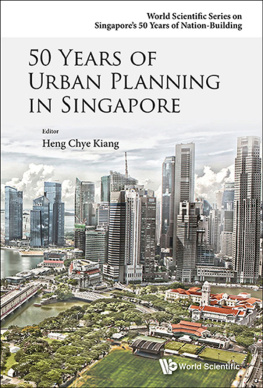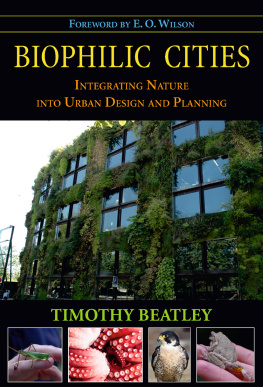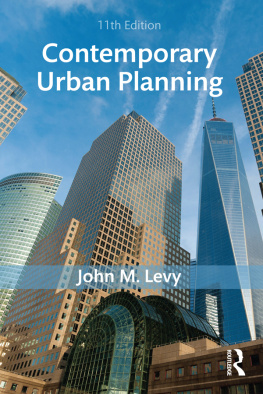First published 1997 by Ashgate Publishing
Reissued 2018 by Routledge
2 Park Square, Milton Park, Abingdon, Oxon, OX14 4RN
52 Vanderbilt Avenue, New York, NY 10017
Routledge is an imprint of the Taylor & Francis Group, an informa business
Copyright Franco Archibugi 1997
All rights reserved. No part of this book may be reprinted or reproduced or utilised in any form or by any electronic, mechanical, or other means, now known or hereafter invented, including photocopying and recording, or in any information storage or retrieval system, without permission in writing from the publishers.
Notice:
Product or corporate names may be trademarks or registered trademarks, and are used only for identification and explanation without intent to infringe.
Publishers Note
The publisher has gone to great lengths to ensure the quality of this reprint but points out that some imperfections in the original copies may be apparent.
Disclaimer
The publisher has made every effort to trace copyright holders and welcomes correspondence from those they have been unable to contact.
A Library of Congress record exists under LC control number: 97074456
ISBN 13: 978-1-138-34244-6 (hbk)
ISBN 13: 978-0-429-43974-2 (ebk)
The ecological city: Reality and mystification
Attention to the problem of the degradation of the urban environment has become particularly intense in recent years. It may be said that this attention particularly exploded on a world scale between the 1980s and 1990s and has represented a sort of turning point in the history of environmentalism, which -as everyone knows - was born as a mass movement and with a strong hold on public opinion around the end of the 1960s. But up to a few years ago, environmentalism had touched on the city, and thus the urban environment, only indirectly.
***
Emblematic of this, is what happened in the European Economic Community. The birth of an environmental policy in the EEC (which was more or less contemporary - at the beginning of the 1970s - with what was happening on an international scale and in the main Western countries) ignored the city as a specific environment to safeguard and organise. As elsewhere, the environment to be protected - at the beginning of environmentalist policy -was felt to be the natural environment: made up of green spaces, water resources, the atmosphere, natural assets to protect (flora and fauna), and the natural landscape in general. It is only in an indirect way, in as much as damage to the natural environment influences the city as well, that the latter was taken into consideration.
In brief, attention was focused at the beginning mainly on the factors creating pollution and devastation in the natural environment, and the effects on the city were measured. It was not taken into consideration, however, that much of the deplored pollution and degradation of the natural environment derived from the city itself: i.e., from bad planning and management of the city and development which was incompatible with the environment.
Naturally, the first victim of bad city planning and management was the urban environment: a mixture of natural environment (water, atmosphere, greenery, etc.) and the socio-cultural environment (the urban landscape, cultural assets, sociality, social deviancy, etc.). Much atmospheric pollution derives from heating and urban traffic, and a lot of water and soil pollution from solid and liquid waste coming from the city. But the factors of bad urban and territorial planning and management have their origin in the imbalance of settlements and in a poor distribution of urban functions in the territory.
Nevertheless, the awareness of this tight relationship between environmental degradation and bad urban planning has yet to penetrate the technical circles.
***
It has been said that what has happened in the European Community is emblematic of what has happened elsewhere. In the United States as well, for example, the EPA (which from 1969-1971 represented the operational instrument of federal policy for the environment) had no official responsibility for urban problems, and never took an interest in these, not even in its studies. In fact, urban problems, rather than representing an occasion for the greater strengthening of urban policies and urban planning with their approach, which was fragmented and by single project (on which the single obligation of the environmental impact assessment was applied), have, for many reasons, contributed to demolishing the fabric of analysis and assessment of the overall and co-ordinated use of the territory and cities.
In other countries as well - apart from exceptions which I would be curious to know and assess - it could be said that more or less the same has happened. The multi-year plans for the environment of some European and non-European countries, such as the Netherlands, Japan, France, Great Britain, Canada and others, which contains some specific programmes for the urban environment. But this plan has had little follow-up in the countrys environmental policy, and has remained in a primitive and strongly provisory state, almost as if it had never taken place.
In short, a serious vision of urban policy on a national and international scale is still far from being manifested in a complete form.
Notwithstanding this slow awareness of the tight relationship between the environmental crisis and urban planning, the movement for an ecological city, as mentioned, has expanded greatly.
In these terms, it is thought that any crisis of overloading or any pressure on the city brought about by the most varied factors of development of the same (demographic, industrial, traffic, etc.) may find its particular effective technical response. Technology is conceived as the panacea for any problem spontaneously arising.
However, our opinion is that this is true only in part. Certainly technology has an important role to play in resolving some problems. And certainly this role would be even more important if there was - given the problems - a more direct connection between environmental problems and technological research.
But, understood in this way, technology risks being the instrument of always insufficient solutions: cures rather than prevention. The mitigation of the uncontrolled effects of development, obtained with the instruments of technology, makes the latter simply an occasional hole filler of an anarchic development. As such it will never be enough and always inadequate in itself.
On the other hand, for as much as it is mobilised for certain ends, technology always needs long periods to repair emerging problems. When it does finally mitigate them, the damage has increased and scattered in different directions from those for which the same technology was conceived and applied. It is like a greyhound chasing a mechanical hare. The paradox is in the fact that the dog will never catch the hare.
In this the role of environmental and territorial planning emerges, for the creation of preventive equilibria, which are planned in advance, in land-use, in an overall comprehensive vision including both the development and conservation of the environment and the territory itself.
But, surprisingly, an awareness of the role had in environmental, urban or regional planning for the balanced development of the territory, is not found even in many experts on the ecological or sustainable city. They have succumbed - so to speak - to dealing with the various problems in a sectorial way, with recourse in particular to technological solutions (which have the dubious results indicated above).






